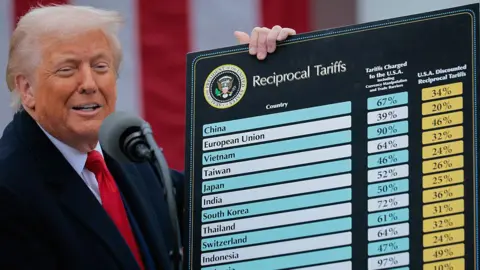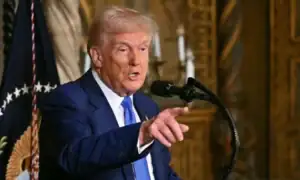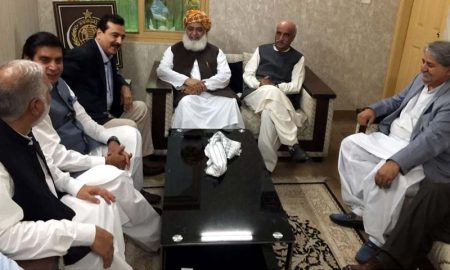Islamabad, Apr 4, 2025: President Donald Trump enacted a comprehensive set of “reciprocal Global tariffs,” aiming to address perceived trade imbalances and bolster domestic manufacturing.
This initiative , referred to as “Liberation Day” by the President Donald Trump , introduces significant changes to the U.S. trade policy landscape.
Implementation of Baseline Tariffs
The new policy establishes a standard 10% tariff on imports from nearly all nations, effective April 5. This baseline rate is designed to ensure that countries imposing higher tariffs on U.S. goods face equivalent charges on their imports to the U.S.
READ MORE:
US Markets Crash as Trump’s Tariff Move Triggers 6% Oil Drop
Country-Specific Tariff Adjustments
Beyond the baseline, additional tariffs have been levied on countries with which the U.S. has significant trade deficits. Notably, China faces a 54% tariff, combining a 20% baseline tariff with an extra 34% due to existing trade imbalances.
Other nations affected include Cambodia (49%), Vietnam (46%), and the European Union (20%). These measures are intended to encourage trading partners to align their trade practices with U.S. expectations.
Impact on Global Trade Relations
The announcement of these tariffs has sent ripples through international markets, eliciting concerns about potential retaliation and the onset of a global trade conflict.
China’s Ministry of Commerce has urged the U.S. to revoke the tariffs, emphasizing that protectionism benefits no nation.
Similarly, the European Union has expressed apprehension, warning of possible countermeasures to safeguard its economic interests.
Domestic Economic Implications
While the administration anticipates that these tariffs will rejuvenate U.S. manufacturing by reducing foreign competition, experts caution about potential adverse effects.
Consumers may encounter higher prices on a range of products, including automobiles, electronics, and apparel. The automotive sector, in particular, could see significant price increases due to a 25% tariff on all foreign-made vehicles.
READ MORE:
Trump’s Tariffs Shake Pakistan’s Textile Industry
Strategic Objectives behind the Tariffs
President Donald Trump justifies these measures as a necessary step to rectify longstanding Global trade inequities and revitalize American industry.
By imposing tariffs that mirror those of other countries, the administration aims to level the playing field and encourage domestic production.
However, critics argue that this approach may disrupt global supply chains and lead to unintended economic consequences.
Looking Ahead
As the implementation date approaches, stakeholders across various sectors are closely monitoring developments.
Businesses engaged in international trade are assessing the potential impact on operations, while policymakers and economists debate the long-term effects of such protectionist measures.
The coming weeks will be crucial in determining the efficacy of these tariffs in achieving the administration’s objectives without triggering widespread economic fallout.









